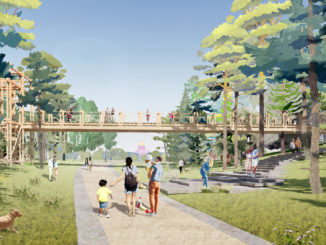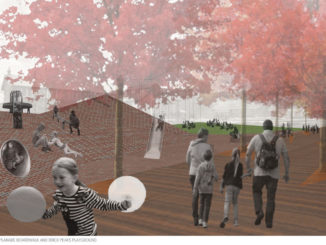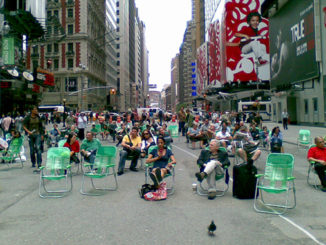The Great Mosque of Aleppo Post-war Landscape & Architecture Restoration
The Umayyad Mosque is the largest mosque at the heart of Aleppo, a UNESCO ancient city in Syria, where the war had raged for five years. Many cultural and historical architectures were damaged and ruined by bombs, leaving numerous bomb craters.
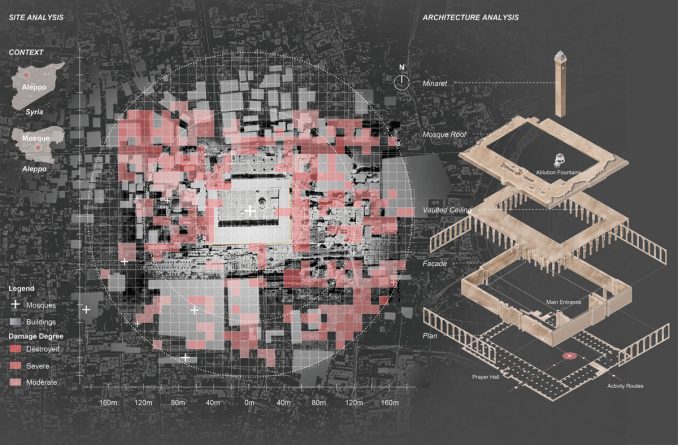
Throughout the pre-research of Islamic culture, Islamic people do the prayer on a weekly basis, regularly at noon on Friday. Initially, they are called by Muezzin to gather in the mosque. Then, they will do the ablution to clean up their faces, elbows, and feet by the ablution fountain to show respect to their god. What’s next, they enter the mosque to do prayer. Based on worshippers’ activities routines in a mosque, an architect needs to obey these orders. Within these spaces, an architect has to try to be a mediator and a negotiator of users’ experiences, and beliefs and illustrate them in the design of nodes and spaces. (Akel Kahera, 2009)
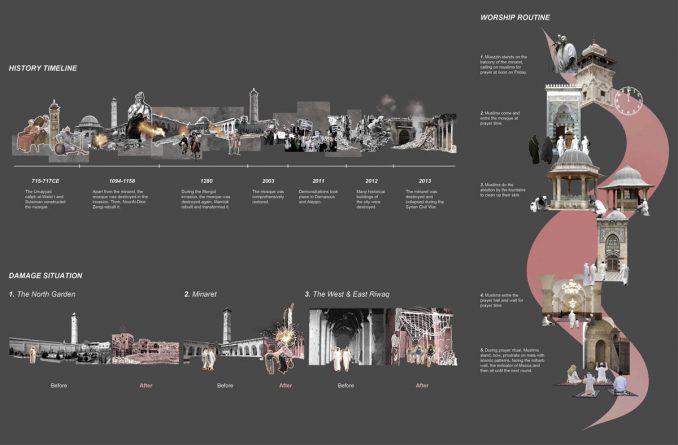
The design proposal is to restore the plaza, façade, and the minaret of the mosque based on the damages that bombs left to reborn Muslims’ faith and show respect to their pilgrimage culture.
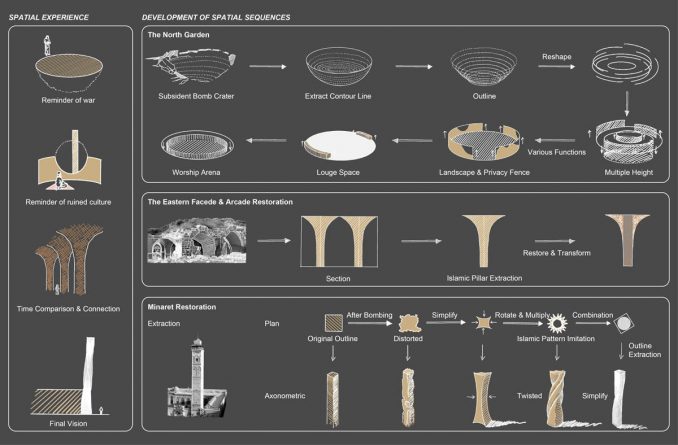
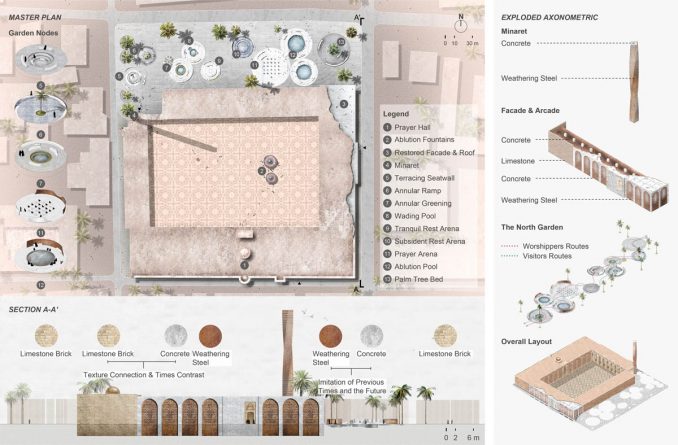
Specifically, the restoring spatial sequence of the original north garden is based on research on Islamic worship routines, from the Ablution Fountain to the Prayer Hall. The basic shape of each arena is inspired by the bomb crater and traditional Islamic Garden design and Islamic patterns to create various types of functional spaces, not only as a reminder of the war but also as respect to the history and culture of the site.
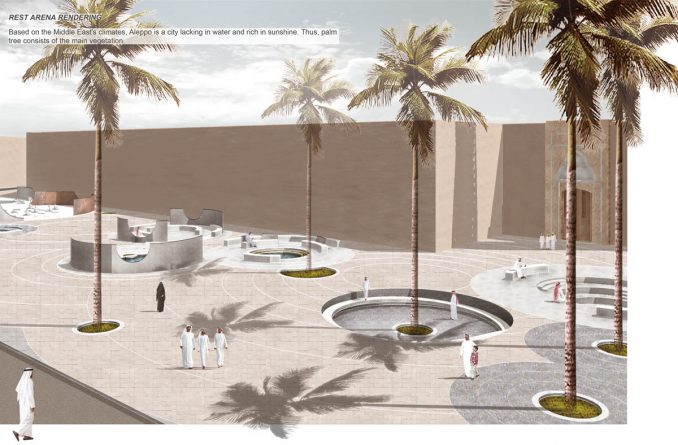
The reconstruction proposal of the minaret is demonstrated as a twist tower as an imitative meaning of the downsides of wars. Once the war takes place, it is possible to twist everything in the city, spanning from architecture, and history to people’s spirits. The design process of its shape follows the idea of simplicity. As a spiritual sanctuary, spaces layouts and decorations are not supposed to be complicated but as simple as it can be, showing people an environment to purify their minds.
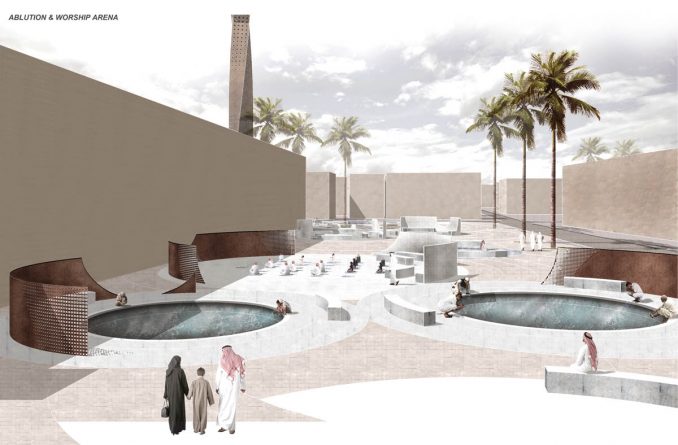
The initial intention of the project is to restore the ruined ancient architecture and landscape in the city and bring Islamic new hope for their future life.
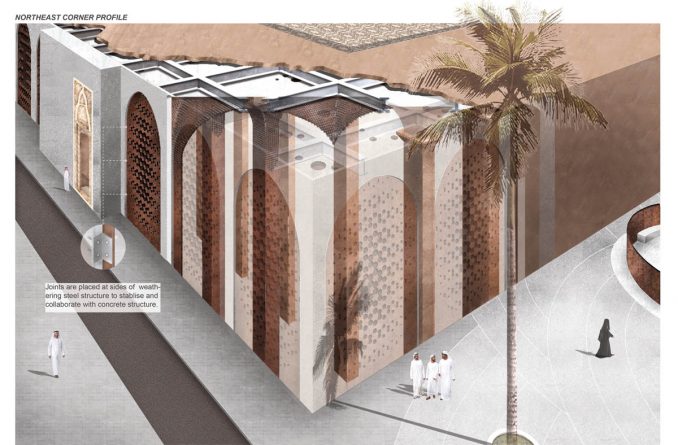
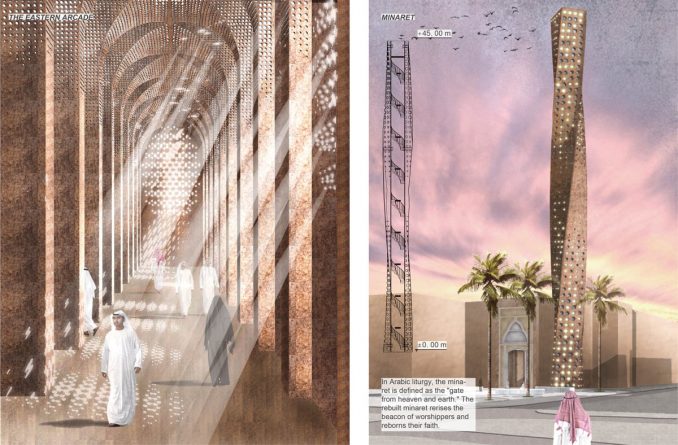
Reference
AKEL KAHERA, L. A. A. C. A. 2009. Mosque design criteria.pdf.
Student Project | Faith Fragment Collection | Fengyi Wu
Student Name: Fengyi Wu,
University: Shandong College of Arts,
Supervisors: Dr. Zhaocheng Huang, Associate Professor. Dongmei Liu, Jia Xie

